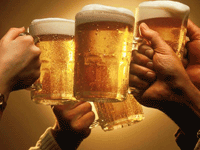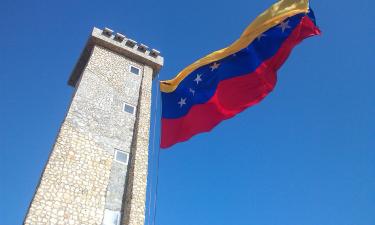Dmitry Medvedev ends cult of beer in Russia
 On Wednesday, President Dmitry Medvedev signed the law which puts beer in the category of spirits and introduces large-scale restrictions on its retail sales, as well as greatly expands the list of places where its consumption is not allowed. This is the result of nearly 20 years of very successful programs to sell and promote beer as the main alcoholic drink in Russia.
On Wednesday, President Dmitry Medvedev signed the law which puts beer in the category of spirits and introduces large-scale restrictions on its retail sales, as well as greatly expands the list of places where its consumption is not allowed. This is the result of nearly 20 years of very successful programs to sell and promote beer as the main alcoholic drink in Russia.
Under the new law that enters into force in 2013, the beer is equivalent to alcohol. Its sales will be banned in the stores from 11pm to 8am, and small retail locations (kiosks, tents) will be subject to the ban on selling beer.
In addition, the list of places where beer consumption is prohibited will be expanded. Currently these areas include parks, gardens, playgrounds, sports facilities, places of public festivals and public transportation. The law accepted on Wednesday added to them yards and porches.
Also, the law bans production and circulation of alcoholic beverages containing ethyl alcohol of less than 7 percent in the consumer packaging of more than 330 milliliters. Additional restrictions are imposed on advertising of alcoholic beverages, including beer and other drinks that had previously belonged to the low- alcohol category.
The explanatory memorandum to the law states that these measures are introduced " to reduce the abuse of alcoholic beverages and prevent alcoholism among the population of the Russian Federation" as well as "to prevent alcohol abuse among young people."
Also read: Beer is good for your bones
It is no secret that the mass consumption of beer and other "low alcohol" beverages by youth has long been a serious concern of specialists. Beer and a variety of "cocktails" are extremely cheap. Generally, a bottle of beer costs less than a liter pack of juice. These drinks are widely available and sold in every store in abundance. The culture of their consumption is extremely simplified - if wine or liquor imply a certain ritual of drinking, beer or low alcoholic drinks are consumed on the go, on the street as a soft drink.
For many years a full-fledged advertising efforts have been creating a cult of low alcoholic drinks in Russia. Through the efforts of television the youth and adolescents were provided behavioral patterns that are closely associated with the consumption of beer. It would be sufficient to mention a large-scale advertising campaign of "Klinskoe" beer completely focused on the young audience.
The situation is really very alarming. Back in 2007, Russia's chief sanitary doctor Gennady Onishchenko warned: "It is not AIDS or tuberculosis that will destroy Russia, but beer alcoholism among the younger generation." "We are very concerned about beer consumption among adolescents and women," admitted in 2008 chief physician of the Department of Health in Moscow Leonid Labeznik. "Production of alcohol in the country has exceeded all reasonable limits; there is abundance of beer and various tonics. They are advertised on television non-stop. There is no obvious adequate counter action from the government."
Here is some earlier evidence of a deputy chief physician of the Yaroslavl Regional Rehabilitation Hospital Alexander Volkov: "For five years we have been questioning groups of high school students and technical school students. In 2005-2006 there was growth in Yaroslavl in all areas. There are more teenagers who consume alcohol, there is larger amount of alcohol consumed. Over 90 percent of students consume alcohol, nearly 20 percent have tried it before the age of ten. Teens traditionally (82 percent of respondents) prefer beer."
The saddest thing that this picture was made possible thanks to the government policies to combat alcoholism. Since the early1990s, the Ministry of Health has been making serious efforts to combat the "specific Russian alcoholism," the "essential feature of the Russian nation." The task on hand was to transfer Russia from the "northern" way of drinking (i.e., predominantly hard liquor) to the "southern" way - wine, beer and cocktails.
This program not only gave the green light for the mass production and widespread consumption of low-alcohol beverages, but was also accompanied by an appropriate promotional campaign. As a result, the Russians began to drink significantly more. The only difference is that now hard liquor consumption is accompanied by mass consumption of beer.
Anton Ponomarev
Pravda.Ru
Subscribe to Pravda.Ru Telegram channel, Facebook, RSS!



